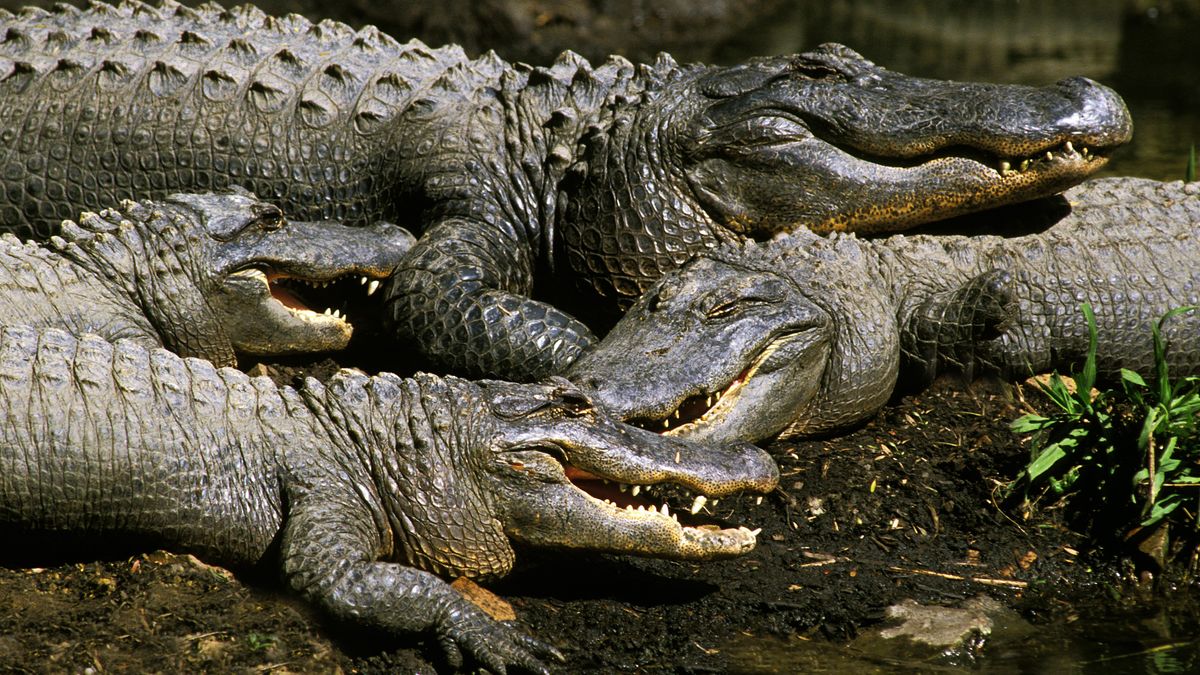
A large-scale saltwater crocodile mating frenzy was recently triggered by an unlikely suspect in Australia — a low-flying Chinook helicopter. Ranchers from the Koorana Crocodile Farm in Queensland, which is home to over 3,000 crocodiles, said their scaly residents became aroused after the flyby and “mated like mad.”
John Lever, owner of the farm, told ABC that the Chinook pilots use his farm as a marker point to change course mid-flight, with one pilot recently coming especially low so the people on board could snap a few photos of the crocs.
“All of the big males got up and roared and bellowed up at the sky, and then after the helicopters left they mated like mad,” Lever said. “There’s something about the sonic waves that really gets them stirred up.”
So what is it about low-flying helicopters that gets crocs in the mood? Herpetologist Mark O’Shea from the University of Wolverhampton in the U.K., told Live Science there are a few reasons why a helicopter might spark a crocodile sex frenzy.
Related: World’s largest captive croc turns 120, giving scientists ‘serious knowledge on longevity’
One reason may be tied to helicopters simulating many of the warning signs of an incoming thunderstorm.

Heavy rains are known to have an aphrodisiac effect on many species of crocodilians. And saltwater crocodiles (Crocodylus porosus) appear to time mating so new hatchlings do not drown in flood water after heavy rains and storms, O’shea said. They mate during thunderstorms so offspring are more likely to hatch in more moderate conditions.
“Usually, mating is a seasonal thing because [crocodiles] want to coincide with the best time to lay their eggs in a burrow or nest,” O’Shea said.
Warm and wet weather usually triggers mating behaviors, and October is just about the right time for crocodile romance in Northern Australia, where Lever’s crocodile farm is located.
But the low-flying helicopters’ rotors may produce the same signals that tell crocodiles a storm is close.

Crocodiles have multi-sensory organs called integumentary sensory organs (ISOs) that are used to detect changes, such as movements in the water, atmospheric pressure and sounds at extremely low frequencies.
“I imagine that the downdraft from a large, heavy helicopter would create a change in pressure that the ISOs on crocodile skin can detect,” O’Shea said. “Dropping barometric pressure from a downdraft may resemble the change in pressure from a storm.
Another potential explanation, O’Shea says, is that the Chinooks could be producing infrasound – sounds so low in frequency that they are undetectable to the human ear. Such vibrations can also be picked up by ISOs.
“Chinooks may artificially recreate the sound of the start of a thunderstorm,” he said.
Such vibrations play an important function in crocodilian communication, O’Shea said. The sound of a Chinook’s powerful rotors may resemble the sound of competing crocodilian males, such as the low bellowing sounds of males looking for a mate, or the sound of males slapping the water with their jaws — another territorial and courting behavior.
So, is a Chinook helicopter all it takes to get crocodiles in the mood? O’Shea says he is not so sure. Crocodiles may need to already be picking up subtle cues, like changes in temperature, that signal their traditional mating season is about to start in order to be swayed by the large aircraft.

